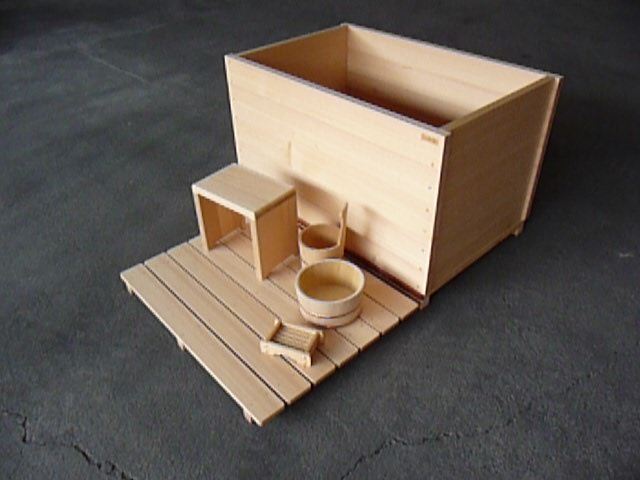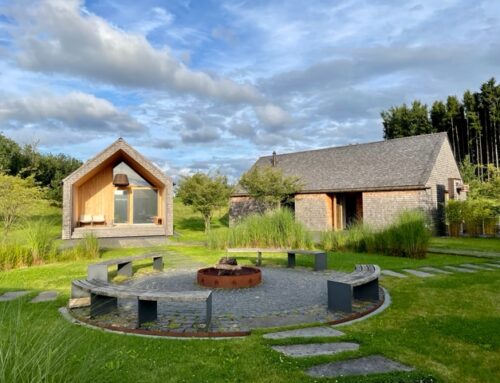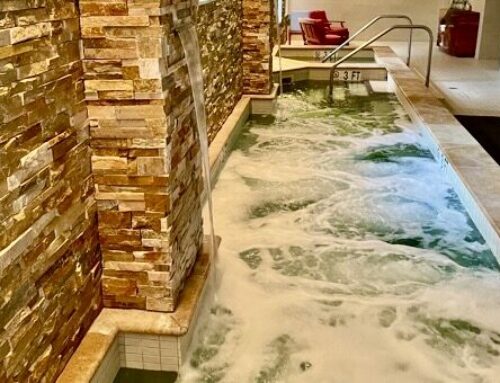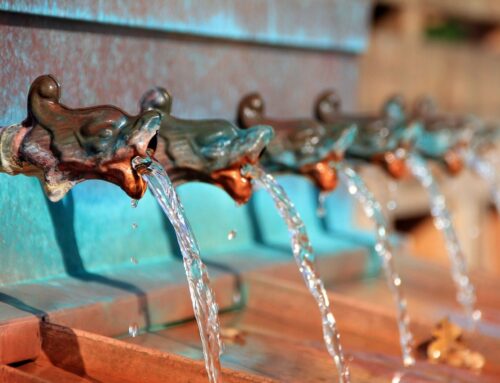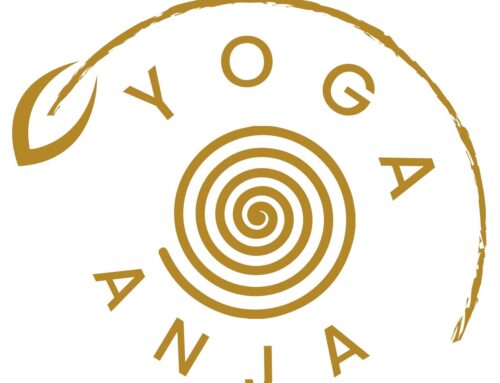Soaking in a Japanese style Wooden Bathtub: Waking up the deepest part of your Spirit
The Global Wellness Trend Report 2017 ranks Wellness Architecture second (and no, just because the identification of wellness trends has been replaced by a new list in 2018 does not mean that those from the previous year have vanished or are no longer à la mode).
If you have read the report you may remember the words “…Architecture has been far too preoccupied with surface aesthetics: with architect-god-heroes conceiving designs to wow, shock, or lay claim to the cutting-edge. Much ego, much beauty on the covers of the Architectural Digests, but with oddly little attention paid to creating designs and using materials that improve the health and happiness of the humans who actually live and work in them – which, last time we checked, was the point of buildings…”
I have had a chance to talk to Iacopo Torrini, Manager at Bartok design Japan Co. Iacopo manufactures out-of-the-ordinary Japanese style wooden bathtubs and accessories. Let’s hear why:
Spa Geek Knowledge: Bathing in Japan
Adam Merry writes in his paper An examination of Japanese Bathing Culture:
‘Steeped in tradition for over a thousand years, bathing culture in Japan remains relevant due to the preservation of the traditional, innovative modernisation of existing bathing structures, and the diversification therein. … the concept that Japan’s vibrant bathing culture was able to flourish due to mythological creation stories, politically motivated access to baths, propagated therapeutic value, and scientific reinforcement of the benefits of a hot bath will be explored. …it is certain that bathing culture in Japan is vibrant, flourishing and indicating long-term economic stability and prosperity, all of which has been made possible by onsen and sento continuously reinventing themselves to remain entertaining and engaging spaces that are, and have always been, about much more than a simple bath.’
Iacopo, how did the Italian end up in Japan?
My family runs an architecture office in Torino. When I graduated from University (faculty of architecture of course!) I decided to take some distance from my parent’s office. In order to find my own path, my style, do my own mistakes. The winds took me to New York. After 3 years of cultivating a passion for tea ceremony, brush calligraphy and the Japanese section of the Metropolitan Museum, I decided that before eventually going back to Italy I wanted to experience living in Japan. And here I am, 20 years later.
With your passion for traditional Japanese architecture and experience in the restoration of heritage buildings, how do you explain the difference between natural materials and ‘unnatural’ materials when building houses? What effect do natural materials have on humans? How does living in a building from natural materials change humans lives?
My answer will probably be upsetting for some readers… I am not a preacher of natural materials tout court. I think that in life everything is relative. True, life would be easier if I had a “strong faith”. But is definitely more interesting if I can put everything into discussion! As a designer, new materials and high technology magic fascinate me. But I also feel a very strong attraction for natural materials. Of course we have to remember that wood, stone or marble are NOT unlimited resources. The more we like them, the more we should be concerned about their sustainability. We should have respect, understand their value and use them with parsimony.
Because we live a life increasingly based on appearance and the visual sense, natural materials surprise us and revitalize our senses as we feel how a stone can be cold, how a polished marble can be smooth or how a wood can be fragrant. Natural materials have a healing property as they restore our parameters and sense of appreciation for authentic things.
And now you manufacture wooden bathtubs! Why bathtubs made from wood?
One of my glorious discoveries in the exploration of my adoptive country is bathing in hot springs, preferably in open air and while enjoining the red reflections of the foliage in October.
The air is crisp and the water is smooth: the soothing sounds of nature wake up the deepest part of our spirit suddenly and fully … like Snow White when she regained conscience…!
Also as much as I am not fond on “rituals”, I fell in love with the concept of “washing” as a purification ceremony.
Have you ever seen the movie the Last Samurai? Do you remember the scene where Tom Cruise is taking a bath? Entering in the hot water is a simple yet life changing experience. There is no point in being strong or cool if you are not clean. Be clean before anything else. Water purifies the body and mind. We are all in that river together with Tom Cruise, converted and energized by this great lesson of humility and power.
Chance converted this fondness for Japanese bathing into a new opportunity when an Italian friend asked me to order a wooden bathtub on his behalf.
Eventually my friend had to change his plan and gave up the project, but some photos and price-lists that I shared on my blog started to attract the eye of “Japan-lovers” worldwide and become the embryo of the Bartok design homepage!
You manufacture your wooden bathtubs from hinoki wood, tell us more about that please!
Traditionally Japanese used to take baths in the natural thermal water spots or in public bath houses. Of course in metropolis like Edo (aka Tokyo) it was difficult to access hot springs and the medium high class wanted to have their own private baths: this custom actually has a history of more than 100 years. When builders were asked to provide baths for individual use, they resorted to wood (the most obvious material in Japanese housing construction) and to the techniques used by marine carpenters (funa-daiku). Two planks of wood are cut at once so that the edges can match seamlessly and grant a leak proof shell (fundamental quality both for ships as for bathtubs…)
Hinoki wood has been the preferred choice as it has a high content of aromatic resins which make it very resistant to humidity and termites. Wooden bathtubs are only made in hinoki, the wood of the 1300 years old Horyuji Temple in Nara, the wood chosen by the emperors.
It is a premium construction material commonly used for columns and fixtures.
A wooden bathtub is subject to the water pressure and sudden humidity variation. Hence only old growth hinoki (over 300 years old) from the Kiso Valley in Nagano prefecture is suitable for this use.
Old growth hinoki cut radially (quarter sawn) will not warp or buckle. And if properly maintained can last for 30 years or more.
Are your wooden bathtubs in spas or hotels as yet? Which markets has your company explored yet, where do you think are future opportunities?
We install most of our wooden bathtubs in private homes. We also have commercial wooden bathtub installations in Italy (S. Ginesio, Varignana), in Hong Kong (Repulse bay) and 2 locations in Singapore.
Until now I have been very passive and marketed the wooden bathtub only through the homepage. Anyway, in the fall of 2018 I am planning to participate in the Dubai and Jakarta Hotel shows. I want to explore the possibilities of this product both for private hotel rooms and for themed spa/wellness areas.
If you had one single advise to give to readers about a daily wellbeing routine, what would that be?
I strongly recommend to adopt Japanese style soaking in a wooden bathtub as your daily evening or morning routine. It consists of washing the body first and enter in the hot water. No jets, no foam or other chemical/electromagnetic stresses.
Just the relaxing aroma of wood, its soft and warm touch and the fresh sound of water flowing into the tub with its welcome effluvia of minus ions.
Soaking in warm water for 30 minutes to 1 hour everyday may sound strange to our Westerner’s ears. But your body will get instinctively in harmony with this healthy custom.
A part for the advantages for the circulatory and lymphatic systems, the scents, the soft touch of wood, the tidy beauty of the hinoki wood grain magnified thru the clear water, represents the ultimate holistic experience and will make you feel deeply relaxed and energized at the same time.
Thank you so much Iacopo, for sharing this with us! What do you think, my readers?
images (c) Iacopo Torrini

